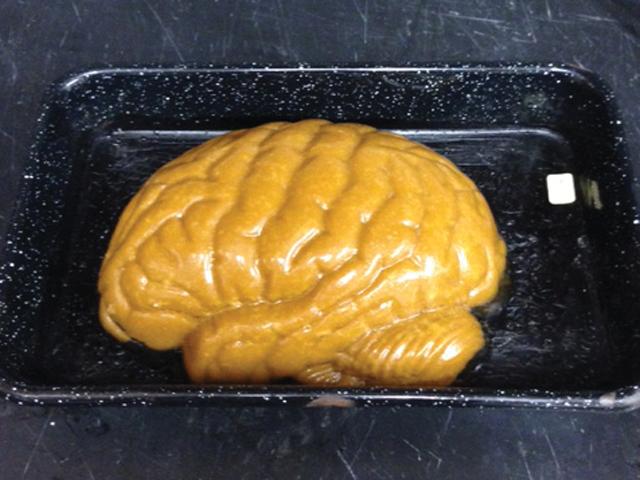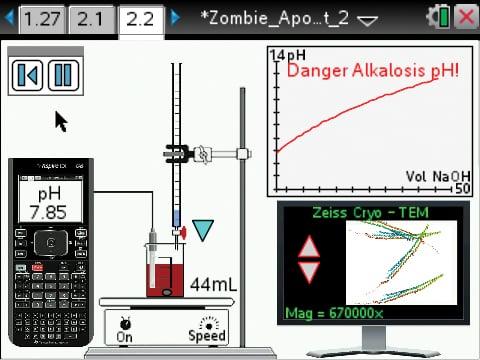By Fred Fotsch
Summertime finds parents scrambling to find meaningful activities that will enrich their child’s education and also provide a deserved break from the routine of the traditional school year. Of late, theme-based STEM camps have popped up all over the nation to offer our children the opportunity to learn more about science, engineering, and mathematics topics while stimulating their interest in STEM careers in a fun and meaningful learning environment. Texas Instruments T3 National Instructors have created several theme-based STEM camps for middle and high school students that incorporate the power of TI-Nspire simulation activities with hands-on data collection using an assortment of Vernier sensors.
Different versions of these camps have been held in locations across the country, one of which was a Zombie STEM Camp at South Laurel High School in London, KY. The central theme for this camp was the study, identification, prevention, and cure of a hypothetical zombie apocalypse. Armed with TI-Nspire handhelds and Vernier probeware, students used the STEM Behind Hollywood: Zombie Apocalypse activities to explore NGSS curriculum standards and participate in activities that incorporate science and engineering practices.
One of the many activities in the Zombie Camp curriculum involves a simulation of the titration of zombie blood and brain tissue. The storyline suggests that a zombie apocalypse was caused by an incorrectly folded protein, known as a prion, that has spread and infected humans. The activity focuses on a biochemist, who theorizes that this pathogenic agent could be destroyed, and the patient cured, by raising the blood pH to 7.6. Students explored protein folding and misfolding using an interactive simulation on the TI-Nspire handheld. They also learned about and practiced the skills involved in titrations in a similar simulation.

Having learned the essential concepts needed to understand the cause of zombiism and having considered a possible mechanism to cure the affected patients, students performed a titration using “zombie brain” tissue with a Vernier pH sensor connected to a TI-Nspire handheld. The zombie brain was actually a gelatin mold of a brain with citric acid added to simulate the low pH of brain tissue caused by zombiism. Students took a sample from the brain and proceeded to halt the zombie apocalypse and save civilization using their newly acquired STEM knowledge and skills.

Participants in this camp had fun learning about zombies and actually doing the tasks required to identify and cure a zombie patient. Next school year, if you find some of your students suffering from zombiism late in the day, try using Vernier probeware and TI-Nspire handhelds with the free STEM Behind Hollywood curriculum available on stemhollywood.com to bring them back to the world of the living!
Fred Fotsch is a T3 national instructor and science teacher at Glendale High School, Springfield, MO.
